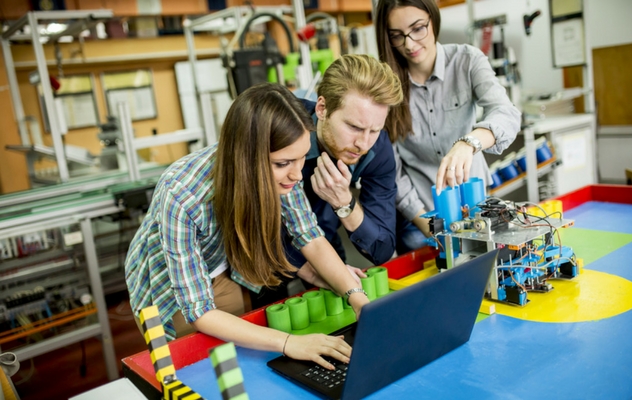
A career in engineering is exciting, rewarding and highly creative. Yet there is a big shortage of young people that think it could be a job for them.
The Year of Engineering, and its legacy campaign "Engineering: Taking a closer look", aim to celebrate the world and wonder of engineering. It forms an important part of the UK Industrial Strategy, which is committed to boosting engineering across the country, ensuring more people have the skills needed to thrive in a modern economy.
The term engineering is derived from the Latin ‘ingenium’ meaning ‘cleverness’ and ‘ingeniare’ meaning ‘to devise’. Engineering: Take a closer look aims to shake-up people’s ideas about engineering and inspire the next generation of innovators, inventors and problem solvers by showing them what engineers actually do. A central theme is to emphasise just how creative engineering is.
Engineers use their knowledge of science, mathematics, economics and their data analysis skills to find suitable cost-effective and safe solutions to a problem. Creating an appropriate mathematical model of a problem often allows engineers to analyse and test potential solutions.
Bringing mathematics to life
Mathematics teachers are often asked the question “When will we need this piece of mathematics in the real world?” Using an engineering context to enhance the teaching of a topic can go a long way towards answering this question, whilst also giving opportunities to utilise valuable problem-solving skills.
To give you a go-to place to enhance topics with engineering applications, we have created a webpage that enriches mathematical topics through the context of engineering.
From engineering skyscrapers to scheduling maintenance on tunnels, ensuring escalators are safe to deciding on the location of life-saving wells, mathematics in engineering impacts every part of our lives.
An example for use at GCSE level is the Pythagoras resource collection. This features two engineering resources:
- Tunnelworks links the mathematics and the science of the Thames Tideway Tunnel project. There are two lessons, both of which have Pythagoras’ theorem as their primary focus, but also involve work on gradients, units, grid references, and scale drawings.
- The second engineering resource, Well placement between villages, looks at the optimal placement of wells in semi-desert areas. Pythagoras’ theorem is used along with work on constructions. These materials are supplemented by our most popular resources for teaching Pythagoras’ theorem, giving a complete package for teaching the topic.
An A level collection considers the use of definite integrals in engineering. The question posed is ‘How can you calculate the energy used, or made available, when the volume of a gas is changed?” A bicycle pump, refrigerator and the internal combustion engine change the volume of a gas or liquid.
The package comes complete with an interactive file that graphs the motion of a piston in a cylinder. Boyle’s law is used and students use both definite integrals and data analysis to complete the activity. The engineering materials are supplemented by rich activities to use in teaching the topic of definite integrals.
There are 21 mathematics collections in total, covering a wide spectrum of topics to use with students working towards both GCSE and A level mathematics. Some of the topics might come as something of a surprise, which highlights the ingenuity required for a career in engineering.

